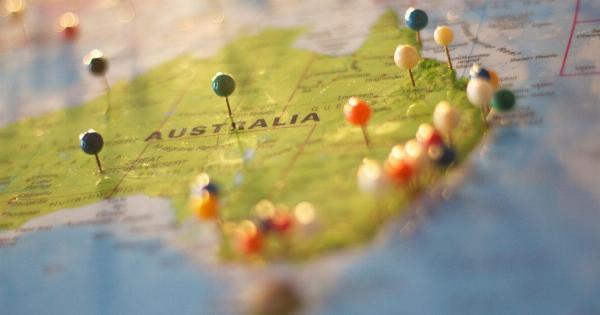As technology continues to advance, there is a growing concern about privacy and surveillance. One such development that brings these worries to the forefront is the remote radar technology that can scan and monitor individuals from a distance.
This article explores the various aspects of this innovative but controversial technology and its potential impact on our privacy.
Understanding Remote Radar Technology
Remote radar technology is a subset of remote sensing technology that utilizes radio waves to detect and track objects.
Instead of relying on cameras or physical proximity, remote radar systems transmit radio waves and analyze the reflected signals to create images or gather information about the target objects.
Traditionally, radar systems were used for detecting and tracking large objects like airplanes and ships. However, with advancements in technology, radar systems now have the capability to identify and track smaller objects, including humans.
This has raised concerns about the potential invasion of privacy and the misuse of such technology.
The Working Mechanism
To understand how remote radar technology scans individuals, we need to delve into its working mechanism. The system consists of multiple components:.
1. Transmitter:
The transmitter emits radio waves with a specific frequency and power. These waves travel through the air and interact with objects they encounter.
2. Receiver:
The receiver detects the radio waves that bounce back after hitting an object. It measures the strength and timing of the returning waves.
3. Signal Processor:
The signal processor analyzes the collected data and converts it into useful information. This information can be used to create images or identify different characteristics of the object.
4. Scanning Mechanism:
The scanning mechanism allows the radar system to cover a large area continuously. This can be achieved through the rotation or movement of the radar antenna.
Applications of Remote Radar Technology
Remote radar technology finds applications in various industries and sectors. Some prominent uses include:.
1. Surveillance and Security:
Remote radar systems are used in surveillance and security applications to monitor a wide area from a centralized location. These systems can detect and track intruders or suspicious activities without the need for cameras or human presence.
2. Search and Rescue Operations:
During search and rescue missions, remote radar technology can help locate individuals in harsh weather or dense forest areas. It can detect human presence even when visibility is poor, enabling faster and more efficient rescue operations.
3. Traffic Monitoring:
Remote radar technology can play a crucial role in traffic management and monitoring. It can accurately measure the speed and movement of vehicles, helping authorities enforce traffic regulations and implement effective traffic control measures.
4. Environmental Monitoring:
Radar systems can be employed for monitoring environmental conditions, such as rainfall, snowfall, and soil moisture. These measurements aid in managing natural resources, predicting weather patterns, and mitigating the effects of natural disasters.
Privacy Concerns and Ethical Considerations
While remote radar technology presents numerous benefits, it also raises concerns surrounding privacy and the ethical implications of its usage. Here are a few key points to consider:.
1. Invasion of Privacy:
Remote radar systems can scan and track individuals without their knowledge or consent, potentially violating their right to privacy.
The continuous monitoring of personal activities raises questions about the extent of surveillance and the balance between security and privacy.
2. Misuse of Data:
The data collected by remote radar systems can be highly sensitive and prone to misuse. Unauthorized access to this data or its utilization for personal gain can have severe consequences on individuals’ lives and well-being.
3. Profiling and Discrimination:
If remote radar technology is used to identify individuals based on certain characteristics, there is a risk of profiling and discrimination. Such practices may perpetuate biases and infringe upon individuals’ rights to equal treatment.
4. Lack of Regulations:
At present, there is a lack of comprehensive regulations governing the use of remote radar technology. The absence of clear guidelines raises concerns about accountability, transparency, and the potential for abuse.
Addressing Privacy Concerns
To mitigate the privacy concerns associated with remote radar technology, certain measures can be implemented:.
1. Strict Legal Framework:
Authorities should establish clear laws regarding the usage of remote radar systems, outlining acceptable practices and penalties for misuse.
These regulations should strike a balance between security measures and protecting individuals’ privacy rights.
2. Transparency and Consent:
It is crucial to ensure transparency in the deployment of remote radar technology. Individuals should be aware when their privacy might be compromised and have the right to provide informed consent before their data is collected and analyzed.
3. Data Security:
Stringent measures must be in place to safeguard the data collected by remote radar systems. This includes implementing robust encryption techniques, limiting access to authorized personnel, and conducting regular security audits.
4. Ethical Guidelines:
Organizations and professionals working with remote radar technology should adhere to ethical guidelines. This includes refraining from using the technology in a discriminatory or biased manner and respecting individuals’ privacy and dignity.
The Future of Remote Radar Technology
The evolution of remote radar technology is expected to continue, with advancements aimed at improving accuracy and reducing system size and cost.
Despite the privacy concerns, this technology holds immense potential to enhance various sectors and contribute to public safety.
For a responsible and ethical use of remote radar technology, a collective effort is required from policymakers, technology developers, and society as a whole.
Striking the right balance between privacy and security is essential to ensure this technology benefits mankind without infringing upon individual rights.



























